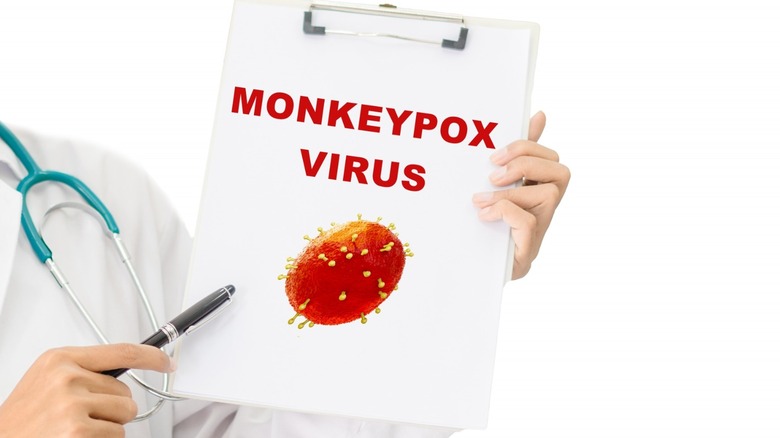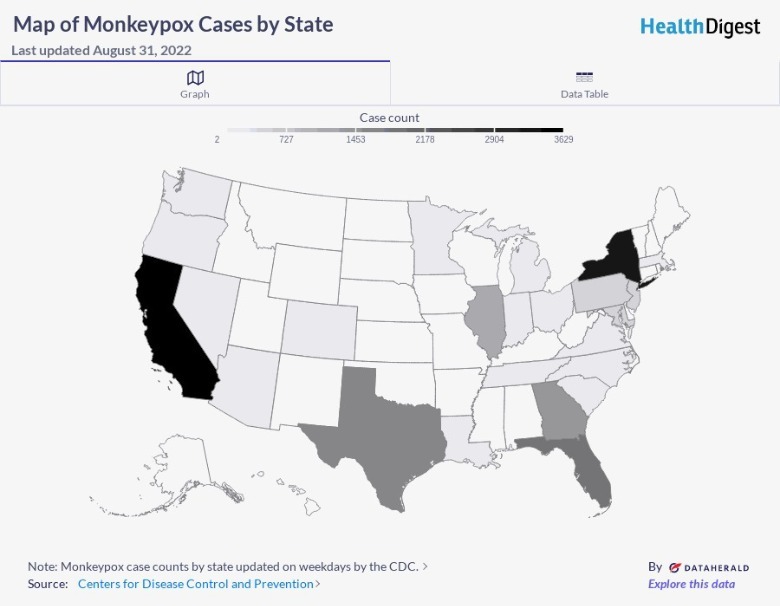How Monkeypox Cases Continue To Rise In States Across The US
According to the Cleveland Clinic, the monkeypox disease comes from the monkeypox virus — which is a type of virus that is similar to smallpox. The Centers for Disease Control and Prevention (CDC) says that monkeypox symptoms include — but are not limited to — a rash that may initially appear like blisters or pimples, chills, fever, headache, fatigue, swollen lymph nodes, and some respiratory symptoms like a cough or scratchy throat. Notably, symptoms typically onset within 21 days of exposure and can last anywhere from two weeks to a month. According to a 2022 study of 528 monkeypox virus infections published in The New England Journal of Medicine, 95% of the infected persons presented with a rash.
While monkeypox is generally considered rare, a recent outbreak has led the World Health Organization to declare monkeypox as a Public Health Emergency of International Concern (PHEIC). The CDC says that there are over 56,000 cases this year globally. Notably, the United States has the most cases in the world. The results are in for a state-by-state breakdown of U.S. monkeypox cases — and the results may surprise you.
Does your state have the most monkeypox cases?
Monkeypox cases are different from state to state, with some parts of the United States facing significantly higher numbers of cases than others. As of August 31, 2022, Wyoming, South Dakota, and Alaska have the lowest number of monkeypox cases in the United States. Alaska has registered 3 cases of monkeypox, while South Dakota and Wyoming have each registered 2 cases apiece. On the other hand, Florida, New York, and California are leading the United States in monkeypox cases. Florida has registered 1,922 monkeypox cases, while New York has registered 3,310 cases. California has totaled the most monkeypox cases in the entire United States, with 3,629 cases.
The CDC says that monkeypox spreads through direct contact with the monkeypox rash, scabs, or bodily fluids of an infected person. Monkeypox can also spread through contact with personal items of an infected person or contact with any of their respiratory droplets. Per Cleveland Clinic, you can protect yourself by avoiding direct contact with infected animals, persons, or contaminated items, practicing safe sex, washing your hands with soap and water, and wearing personal protective equipment when attending to any infected persons. You can also disinfect any frequently contacted surfaces.


